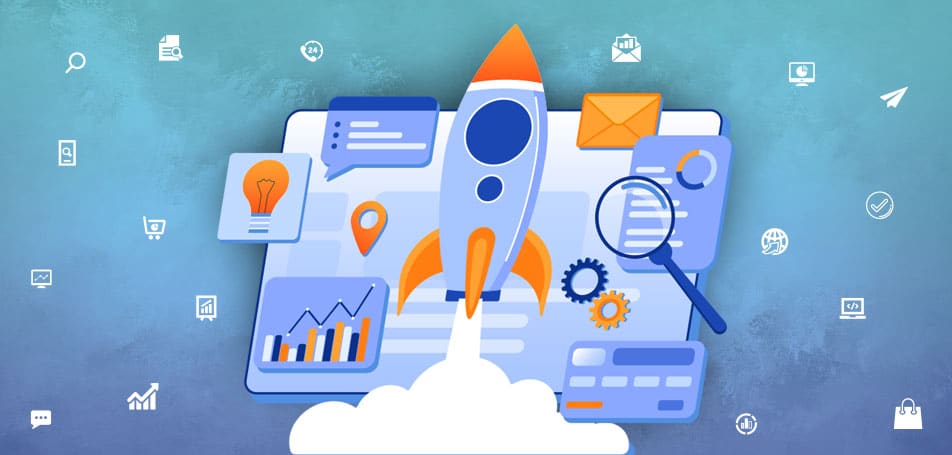
Of the metrics available to small business owners, website designers, and digital marketers, conversions are the best indication of how well one’s digital presence delivers profitable, tangible results. Upping this number translates to boosting one’s standing in a world that does a substantial and growing portion of its shopping online.
Thankfully, competing in the digital marketplace and convincing leads to convert doesn’t always require sweeping changes or tons of cash. Below are four simple changes you can make today, to your existing pages and processes, if you want to see higher conversion numbers almost immediately.
1. Use More Direct, Action-Focused Language
Sometimes, you can look to the fundamentals to steer you onto the right track. Language itself can be a powerful tool if you use it in a targeted, precise, and powerful way.
You can direct your visitors and prospects toward conversion goals by exploring alternative words like:
- Personal pronouns: us, you, your, our, me
- Action verbs: learn, start, try free, join, explore, grow
- Value-focused descriptors: free, now, save, instant, limited, exclusive access
You wish to elicit a conversion – but for that action to come organically, the act must feel like the prospect’s idea, not yours. Choose your words carefully and aim to communicate something about the value you deliver with each syllable.
2. Use Video on Your Landing Pages
Whether you’ve built a single landing page or one for each audience, landing pages are an important part of your first impressions and conversions.
However, the traditional approach to landing pages may hold back your conversion rates. Research suggests landing pages are successful at spurring conversions barely 10% of the time.
If we’re talking about simple changes, it doesn’t get much simpler than embedding a video. Related research shows that adding video to landing pages could improve conversions by an incredible 85%.
Why? Because video is the preferred communication medium of the day, 45% of all internet users watch one or more hours per day. Applied to conversions, the video puts a human face on businesses and lets you make your case using a splash of emotion and entertainment value.
3. Redress the Checkout Process
There’s a lot about the checkout or signup process that can make your prospects cut and run.
Use your memory as a shopper yourself, or your imagination, to put yourself in the shoes of your would-be customers. Some of the biggest frustrations come checkout time include:
- Being asked for excessive personal information
- Having shipping costs or hidden fees withheld until the final step
- Finding no option to “Check Out as Guest”
Additionally, not supporting as many modern payment options as possible – including contactless options like Apple Pay and even “fringe” options like crypto – could limit your audience.
It’s also common for web designers to look at people with disabilities. Rules on accommodating website visitors are far from standardized, but paying attention to colors, contrast, alt tags, and other web elements may pay accessibility dividends and improve conversions.
Focus your efforts on helping prospective customers feel confident in their purchase and comfortable with the process of committing to it. Lapses on your part where convenience and security are concerned might be deal-breakers.
4. Personalize the Conversion Process
It’s increasingly common, and getting easier every day thanks to technology, for businesses to ethically use interaction data in the conversion process.
Dynamic personalization for landing pages and other steps in the sales funnel is increasingly seen as a must-have by marketers and business owners. Some 66% of online customers now expect some level of personalization, and failure to deliver could send them elsewhere. Consider the types of data available today:
- Social media interactions
- Location
- Search History
- Demographics
- Actions are taken on the business’s website
- Cart contents
Businesses can use data to better anticipate the questions their prospects might have, and to get into their headspace as much as possible.
Those without the budget or technical know-how can carry out the simplest possible implementation of this idea, which is to serve distinct landing pages to different audiences based on basic cues like location. Having the phone number of your local branch or representative dynamically appear on the page saves your prospects the trouble of hunting for it and removes one more conversion barrier.
Ethically using data helps dynamically personalize the experience for the user, but it also helps the business zero in on potential problems and snares.
Keep Testing for Conversion Success
If you don’t know which changes are delivering actual results, remember that A/B testing is an option. You can serve different variants of a webpage to different audiences, or at different times, and measure the conversion rates of each. You could find that something as straightforward as a product photo or typeface color might be the missing variable you’ve been looking for to boost conversion.







